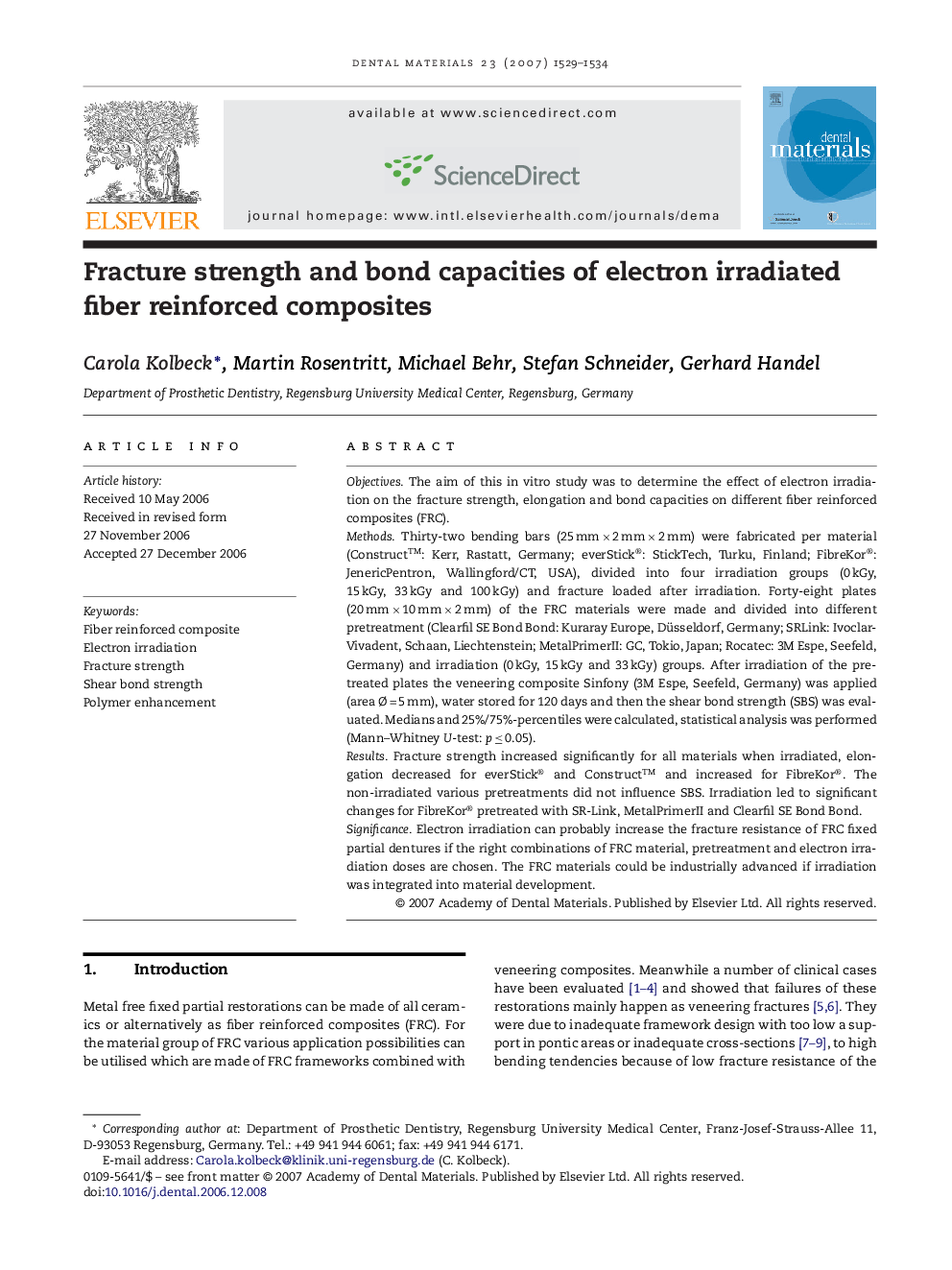| Article ID | Journal | Published Year | Pages | File Type |
|---|---|---|---|---|
| 1423097 | Dental Materials | 2007 | 6 Pages |
ObjectivesThe aim of this in vitro study was to determine the effect of electron irradiation on the fracture strength, elongation and bond capacities on different fiber reinforced composites (FRC).MethodsThirty-two bending bars (25 mm × 2 mm × 2 mm) were fabricated per material (Construct™: Kerr, Rastatt, Germany; everStick®: StickTech, Turku, Finland; FibreKor®: JenericPentron, Wallingford/CT, USA), divided into four irradiation groups (0 kGy, 15 kGy, 33 kGy and 100 kGy) and fracture loaded after irradiation. Forty-eight plates (20 mm × 10 mm × 2 mm) of the FRC materials were made and divided into different pretreatment (Clearfil SE Bond Bond: Kuraray Europe, Düsseldorf, Germany; SRLink: Ivoclar-Vivadent, Schaan, Liechtenstein; MetalPrimerII: GC, Tokio, Japan; Rocatec: 3M Espe, Seefeld, Germany) and irradiation (0 kGy, 15 kGy and 33 kGy) groups. After irradiation of the pretreated plates the veneering composite Sinfony (3M Espe, Seefeld, Germany) was applied (area Ø = 5 mm), water stored for 120 days and then the shear bond strength (SBS) was evaluated. Medians and 25%/75%-percentiles were calculated, statistical analysis was performed (Mann–Whitney U-test: p ≤ 0.05).ResultsFracture strength increased significantly for all materials when irradiated, elongation decreased for everStick® and Construct™ and increased for FibreKor®. The non-irradiated various pretreatments did not influence SBS. Irradiation led to significant changes for FibreKor® pretreated with SR-Link, MetalPrimerII and Clearfil SE Bond Bond.SignificanceElectron irradiation can probably increase the fracture resistance of FRC fixed partial dentures if the right combinations of FRC material, pretreatment and electron irradiation doses are chosen. The FRC materials could be industrially advanced if irradiation was integrated into material development.
